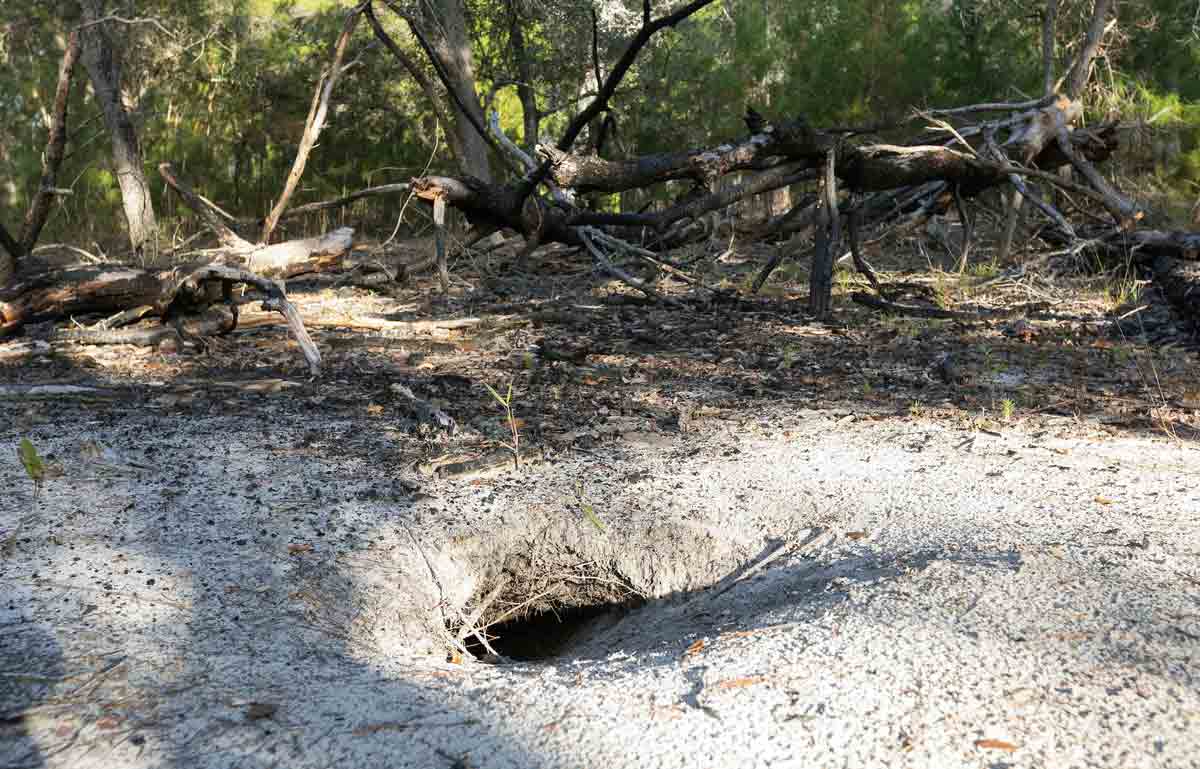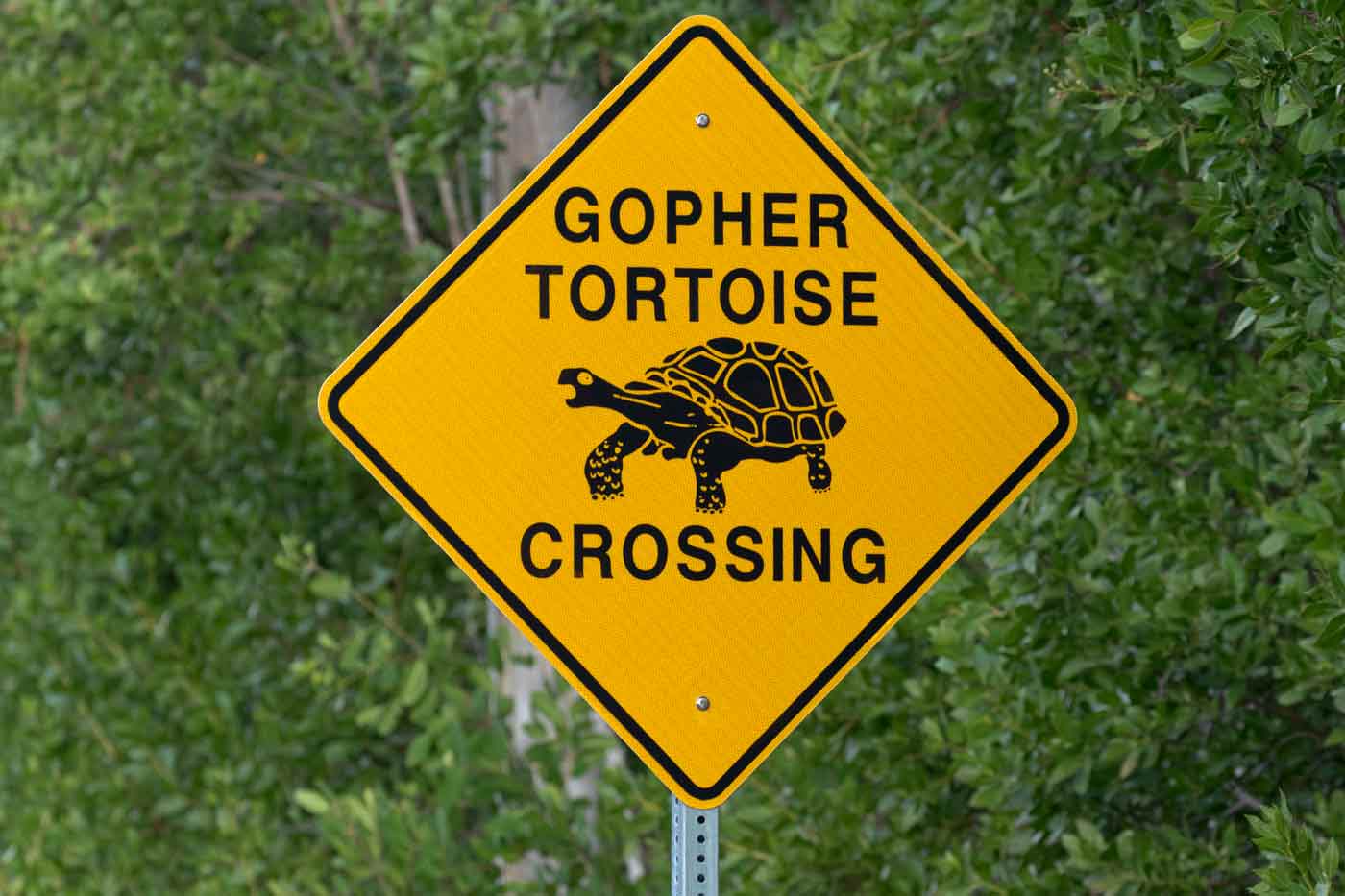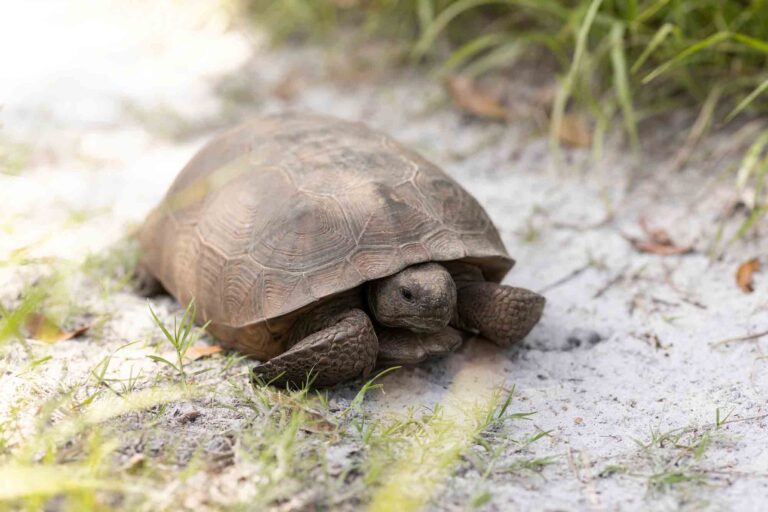NICEVILLE, Fla. — Niceville.com is teaming with the University of Florida’s Institute of Food and Agricultural Sciences (UF/IFAS) to continue the weekly “Who’s that Critter” series, offering guides to Florida’s native wildlife.
This week’s focus is on the gopher tortoise, a land-dwelling reptile that has lived in Florida for roughly 60 million years. With more than 80 ecosystems and 4,000 native animal species, Florida is a biodiversity hot spot, making it one of the best places to encounter the gopher tortoise in its natural habitat.
Katie Mastenbrook, a Florida Sea Grant agent with UF/IFAS Extension Pinellas County, is based at Weedon Island Preserve, a well-known gopher tortoise habitat. She shared insights into the behavior, life cycle, and importance of these unique animals.
During summer months, gopher tortoises are more social because it is mating season. Males can become territorial and sometimes engage in shoving matches.
Females may be laying eggs or tending to fresh nests, which are usually dug at the apron — the sandy area near the burrow entrance. Eggs typically hatch after 80 to 100 days, but, like sea turtles, parents do not provide care for the hatchlings, which must fend for themselves from birth.
Gopher tortoises do not reach sexual maturity until they are between 10 and 25 years old. The rate depends on food availability, environmental conditions, and the tortoise’s sex, with females typically maturing later than males.
In the wild, gopher tortoises live 40 to 60 years, but some individuals survive much longer in captivity.
Herbivores by nature, gopher tortoises graze on a variety of low-growing plants, including grasses, prickly pear cactus, sensitive briar, milk pea, silkgrass, blue-eyed grasses, groundcherries, and cutleaf evening primrose. By dispersing seeds and aerating soil through their digging, they play an essential ecological role.
Their burrows are considered engineering marvels. They can stretch up to 40 feet long and 10 feet deep, maintaining consistent temperature and humidity throughout the year.
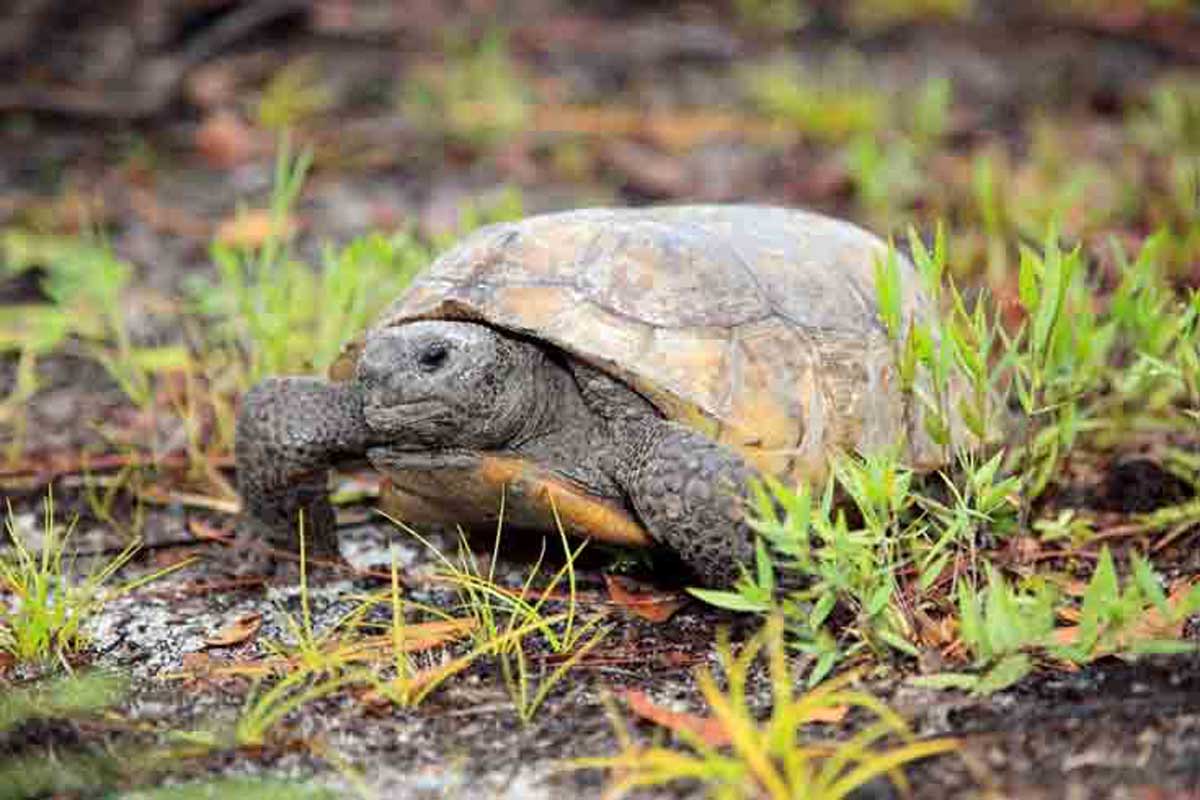
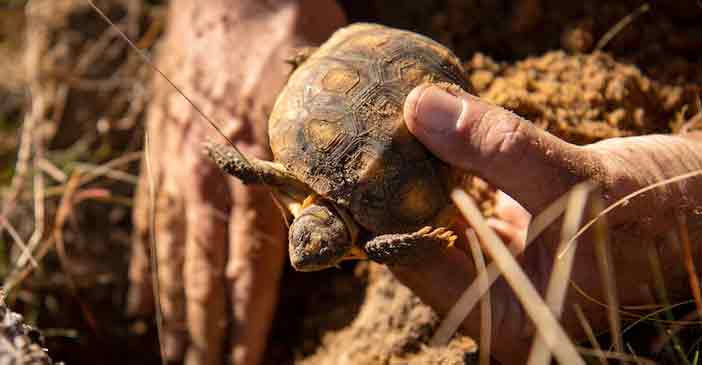
The burrows shield tortoises from predators, wildfires, and extreme weather. Within a territory that may range from one to four acres, a single tortoise may construct multiple burrows.
These burrows are more than just homes for tortoises. They also provide shelter for over 350 species, including threatened or endangered animals such as the Eastern indigo snake and gopher frog.
This makes the gopher tortoise a keystone species — one whose survival supports entire ecosystems.
Because gopher tortoises are considered a threatened species, people should take precautions when encountering them. They are land animals and cannot swim, so they should never be placed in freshwater or saltwater.
Tortoises get their water from food and rain puddles in their habitat.
Mastenbrook advises people not to disturb burrows by digging, filling, or walking too close. Pets should always be leashed around tortoise habitats, as dogs can destroy burrows or chase tortoises.
Injured animals should be reported to wildlife agencies or rehabilitation centers, but not moved, since tortoises usually remain in established territories.
Drivers are also urged to stay alert for tortoises near roadways, particularly in areas with wildlife signage. Protecting the gopher tortoise helps preserve Florida’s ecosystems and the many species that depend on its burrows for survival.
